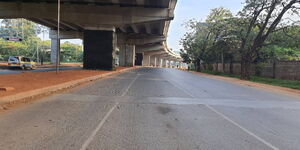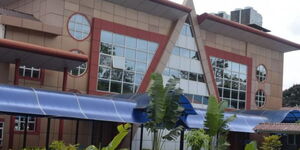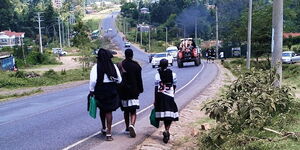Have you ever alighted a vehicle in the middle of a traffic jam and suddenly felt that the traffic started to flow?
As Kenyans.co.ke, we decided to investigate this interesting phenomenon after reading Kenyans' response to a social media post.
In the comments, one online user narrated his experience on how he alighted a vehicle in the middle of a traffic jam in Haile Selassie Avenue and noticed that the traffic immediately started to move.
"One time I did alight at GPO and then, the traffic started moving. At times you even find that matatu has arrived at your destination before you," Bethwel Kipruto shared.
Motorists also shared a common problem when driving in a traffic jam and on switching to a lane that appears to move faster, it appears to become slower and traffic on the old lane seemingly becomes faster.
In the course of our investigations, we established that the phenomenon can be best explained through a set of engineering theories known as balking, jockeying, and reneging.
The balking theory states that as a passenger, you will decide to alight the vehicle because the traffic is too long, especially on a highway. This theory also states that on a straight road, we will always perceive traffic to be stagnant.
The second theory is jockeying. Under this theory, you will decide to move from one lane to the next because you perceive that the other vehicles in the other lanes move faster. Once you move to the 'desired lane', you will surprisingly perceive your previous lane to be moving much faster.
Lastly, we have reneging. In this theory, passengers decide to alight from a vehicle immediately after they are on board.
Why do we perceive vehicles to move faster once we alight?
To explain these three behaviours, we sought the opinion of a human behaviour expert.
In an interview with a Nairobi-based psychologist on October 7, 2021, Gregory Mwaura explained that this phenomenon can only be explained by the environment in which we exist.
"In Nairobi, people are very fast. Life is very fast. We will always have an assumption that things need to be faster, we tend to activate our fast flight mode through the brain,
"The greatest organ in the body is the brain. It is the center point that controls any other organ," he stated.
Simply put, you will perceive traffic to move faster after alighting a vehicle simply because of the environment you are in and what the brain is communicating to you.
“The environment shapes us 60 per cent and we are shaped by this. The fact that we are in Nairobi, we will want to beat the timeline. You will be in traffic and see that you are late. This is determined by past experiences and by what you are undergoing as a person," he adds.
In conclusion, the perception of vehicles moving faster is all in the brain.
In addition, the flow of traffic is determined by other factors such as the number of vehicles on the road, the state of the road, and the traffic police among other things.












